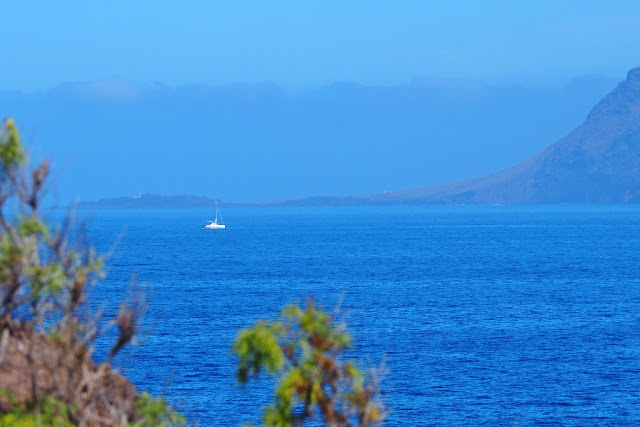While waiting for … you know what … I must
post more of the blossoming Tenerife. This isn’t any comprehensive introduction, only a listing of certain plants I photographed in the neighbourhood where we stayed.
Some of them are familiar from areas with
warm climate, such as the magnificent bougainvillea above. They were blooming in
various colours including white although I didn’t happen to shoot that one. Note
that the colourful parts are, in fact, bracts acting as attractors of pollinators
as the actual flowers are so tiny.
In our part of the world the hibiscus or China
rose is a common houseplant but there they were growing as shrubs flowering in many colours.
The nerium or oleander (Nerium oleander) is another plant
familiar to me from the Mediterranean.
I’m not entirely sure but I believe the above climber is a trumpet vine.
This dwarf umbrella tree (Scheffrela arboricola) of the Araliaceae family formed a hedge
bordering a garden. It was intriguing to see the fruit the common houseplant
produces when grown in a subtropical garden.
Naturally, there were an abundance of cacti
and other succulent plants some of which are native to the Canary Islands. Here
are only a few examples as my attention was most of the time drawn to the more
conspicuous bright-coloured flowering, I’m afraid. From the top: crown of
thorns (Euphorbia milii), prickly
pear (Opuntia), and Canary Island
spurge (Euphorbia canariensis).
Now a couple of fascinating trees. I had to
do quite a bit of searching to find the name of the blossoming ornamental tree I
spotted arching above the bougainvillea at our hotel. As far as I could tell,
it is Tipuana tipu also known as
pride of Bolivia.
The second one is a Royal poinciana or
flamboyant (Delonix regia) sometimes
called flame tree. In early April, it was only just beginning a new growing season. Its ripe dried pods hold loose seeds inside and can be used
as toy rattles. Unfortunately, we only came across pods hanging far too high to
be picked as souvenirs. Not that we’d have any babies in the family yet but our
travelling companions do.
It requires quite extensive networks of automated
watering systems to keep the garden and landscaping plants flourishing in these conditions. On
contrast, here are a few typical local wild plants with rather unassuming
flowering. From the top: broom (Genista),
tree tobacco (Nicotiana glauca), fountain
grass (Pennisetum), and Aloe vera. The last one can also be seen
below as a garden plant. With some heavy cropping I’ve taken the photo to the
tropics. My hunger for … you know what … is starting to call for desperate
measures.




































































